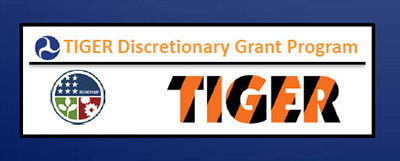DOT announces nearly $500 million in TIGER grant funding for 41 projects
The objective of the TIGER program is to ensure that economic funding is made available for transportation infrastructure projects, and that project spending is monitored and transparent.
The United States Department of Transportation (DOT) last week announced that nearly $500 million was doled out to 41 recipients in 43 states through its Transportation Investment Generating Economic Recovery (TIGER) grant program.
The objective of the TIGER program is to ensure that economic funding is made available for transportation infrastructure projects, and that project spending is monitored and transparent.
Since 2009, the TIGER grant program has provided roughly a combined $5.5 billion to 421 projects in all 50 states, the District of Columbia, Puerto Rico, Guam, the Virgin Islands and tribal communities. These federal funds leverage money from private sector partners, states, local governments, metropolitan planning organizations and transit agencies.
“TIGER grants are targeted investments for our local communities that will increase safety, create jobs and modernize our country’s infrastructure,” said DOT Secretary Elaine L. Chao in a statement.
DOT said that more than 64% of this round of TIGER funding was for rural projects, which, it said, highlights the White House’s commitment to supporting the country’s rural communities.
And it added that tribal projects are receiving $39.18 million of this round of awards, the highest amount of funding since the first round of TIGER.
This round of grants, said DOT, gave special consideration to projects which emphasized improved access to reliable, safe, and affordable transportation for communities in rural areas, such as projects that improve infrastructure condition, address public health and safety, promote regional connectivity, or facilitate economic growth or competitiveness.
The future of the TIGER grants has been in a bit of a state of flux over the last year or so. Funding for TIGER was omitted in the White House’s budget blueprint, which was released in March 2017, and the House Appropriations Committee’s proposed fiscal year 2018 Transportation, Housing and Urban Development funding bill
By cutting TIGER grants, the White House budget proposal would save $499 million from the 2017 annualized continuing resolution level, according to the language in the budget. It added that the DOT’s National Significant Freight and Highway Projects grant program, which is authorized by the FAST Act, supports larger highway and multi-modal freight projects with significant national and regional benefits and is authorized at an annual average of $900 million through 2020.
A Washington-based transportation infrastructure policy expert told LM earlier this year that one of the unique aspects of the TIGER program is that it—unlike existing discretionary and formula funding at DOT—allows local governments to compete on an equal footing with states for critical infrastructure projects.
“All of these attributes have made the TIGER program extremely popular with members of Congress,” she said. “The elimination of this program would return DOT and the States to the former, rigid funding structure that jeopardizes innovative transportation projects that build for the future.”
In August 2017, the Coalition of America’s Gateways and Trade Corridors (CAGTC) called the removal of TIGER a very damaging cut in the DOT budget.
“Discretionary competitive grants like TIGER are one of the most effective tools we have for leveraging federal dollars for infrastructure projects,” said CAGTC president Leslie Blakey. “Research has shown that by advantaging proposals that present an innovative finance package for a project, we create an incentive for project sponsors to reduce their dependence on federal funding and encourage more use of private capital as funding partners.”













